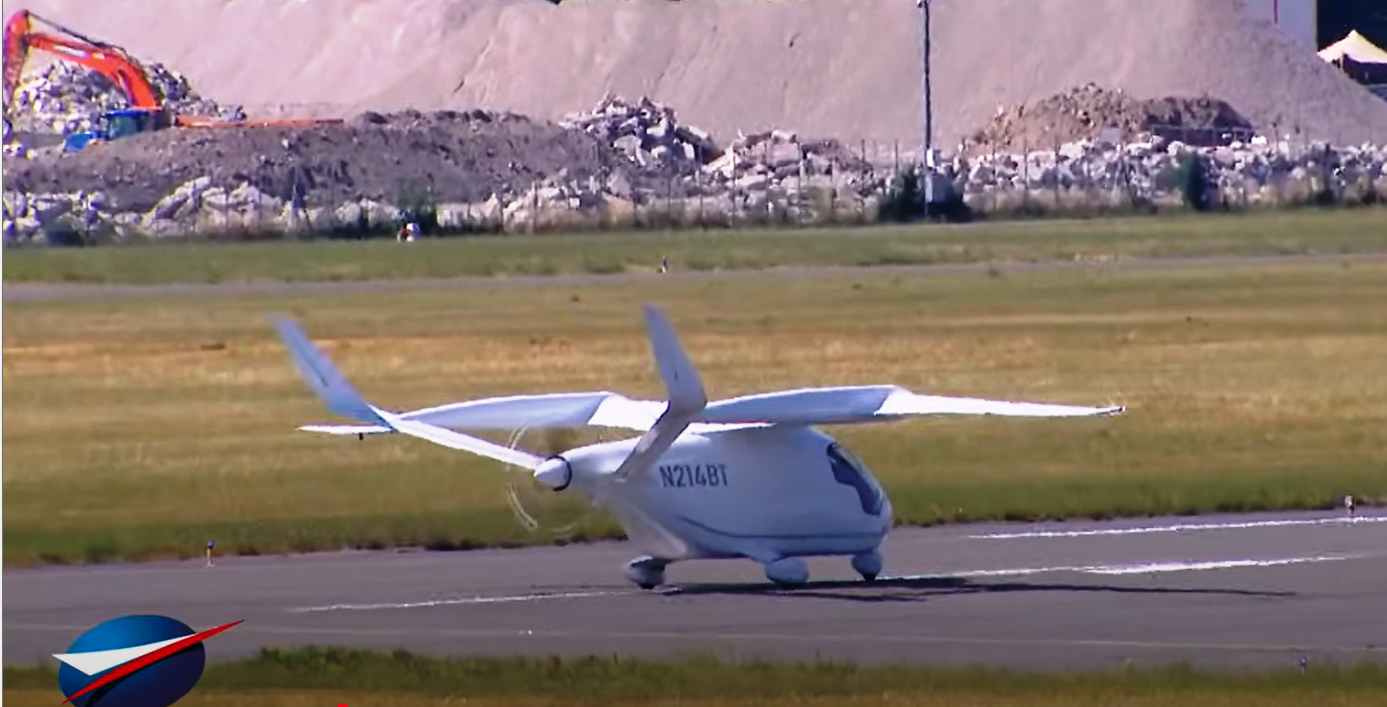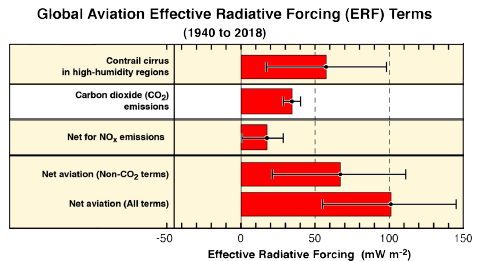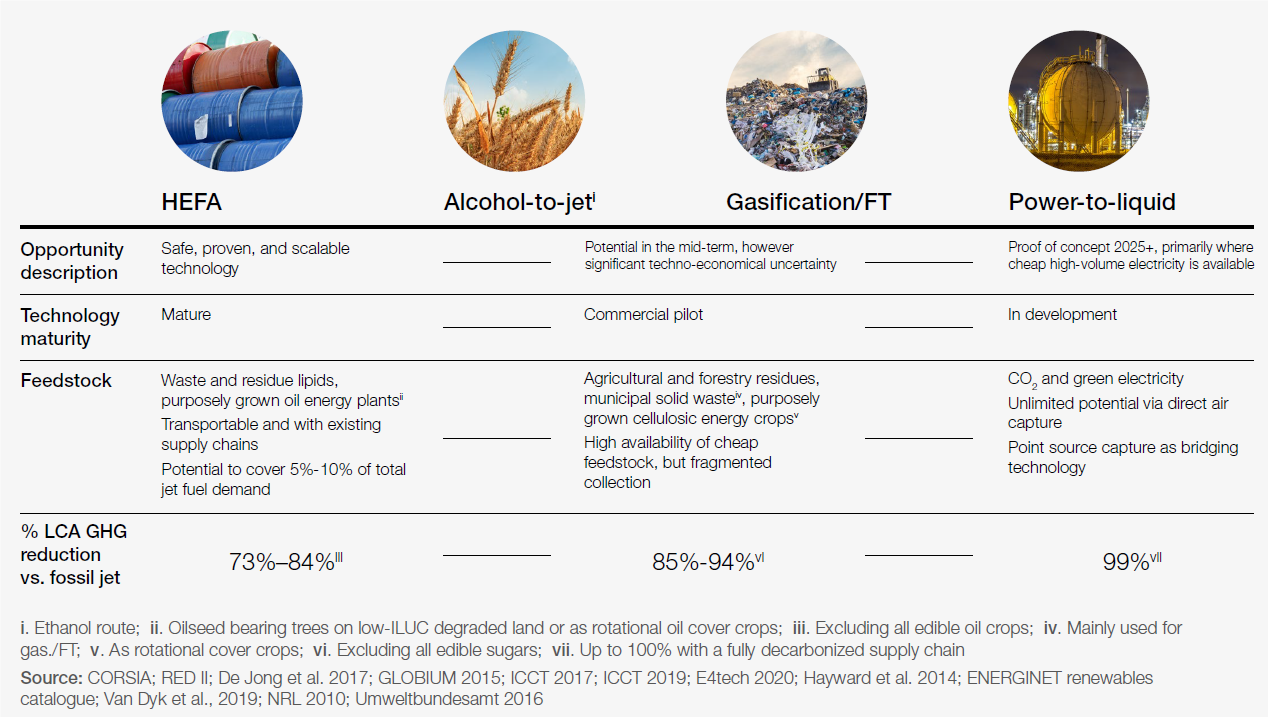Leeham News and Analysis
There's more to real news than a news release.
Bjorn’s Corner: Air Transport’s route to 2050. Part 28.
June 27, 2025, ©. Leeham News: We do a Corner series about the state of developments to improve the emission situation for Air Transport. We try to understand why development has been slow.
We have explored various methods to mitigate global warming throughout the series. Over the last few weeks, we have summarized the practical results we can expect from the different alternatives available to reduce global warming in air transport. We looked at the following:
- Alternative, lower-emission propulsion technologies.
- The industry’s typical improvement in fuel consumption over time.
- The improvements that SAF can offer by 2050.
- The different Emission Trading Schemes (ETS) that exist globally.
- And finally, what warming contrail reductions can achieve.
We have summarized what the first four actions can achieve by 2050 and presented the results in a table, Figure 1. Now we add what global warming contrail avoidance can do.
Electric Flight and the Ugly Duckling
By Bjorn Fehrm
June 25, 2025, © Leeham News at Paris Air Show: The low or no emission propulsion discussion started at the 2014 Farnborough Air Show when Airbus’ E-Fan prototype flew in front of a surprised crowd. Everyone then thought that low-emission electric propulsion aircraft would be common before 2020.
It took 11 years and as many air shows before a certifiable battery-electric aircraft would fly again at an air show, this time at the 2025 Paris Air Show (Figure 1). Of the over 100 announced projects to develop and produce a battery electric passenger aircraft, it was the Alia CX300 from BETA Technologies that succeeded.
The story of BETA Technologies’ Alia CX300 is, in many ways, the story of the Ugly Duckling that grew to become a White Swan.
Bjorn’s Corner: Air Transport’s route to 2050. Part 27.
June 20, 2025, ©. Leeham News: We do a Corner series about the state of developments to improve the emission situation for Air Transport. We try to understand why development has been slow.
We have examined different ways to lower global warming over the course of the series. Over the last weeks, we have summarized what practical results we can expect from the different alternatives we have to reduce global warming from Air Transport. We looked at the following:
- Alternative, lower-emission propulsion technologies.
- The industry’s typical improvement in fuel consumption over time.
- The improvements that SAF can offer by 2050.
- The different Emission Trading Schemes (ETS) that exist globally.
- Finally, what warming contrail reductions can achieve.
Bjorn’s Corner: Air Transport’s route to 2050. Part 26.
June 13, 2025, ©. Leeham News: We do a Corner series about the state of developments to improve the emission situation for Air Transport. We try to understand why development has been slow.
We have examined different ways to lower global warming over the course of the series. Over the last weeks, we have summarized what practical results we can expect from the different alternatives we have to reduce global warming from Air Transport. We looked at the following alternatives:
Bjorn’s Corner: Air Transport’s route to 2050. Part 25.
June 6, 2025, ©. Leeham News: We do a Corner series about the state of developments to improve the emission situation for Air Transport. We try to understand why development has been slow.
We examined alternative, lower-emission propulsion technologies four weeks ago and compared them the following week to the industry’s typical improvement in fuel consumption over time. Then, we examined the improvements that SAF can offer by 2050. Last week, we complemented the picture with the different Emission Trading Schemes (ETS) that exist globally.
Now, we discuss what warming contrail avoidance could achieve in reducing global warming.
Bjorn’s Corner: Air Transport’s route to 2050. Part 23.
May 23, 2025, ©. Leeham News: We do a Corner series about the state of developments to improve the emission situation for Air Transport. We try to understand why development has been slow.
We have since we started in October last year looked at:
- Alternative, lower emission, propulsion technologies, ranging from electric aircraft with batteries as energy source, different propulsion hybrids, and new concepts for Jet-Fuel and Hydrogen gas turbine engines.
- We have also looked at recent research into the role of CO2, NOx emissions and Contrails generated by airliners.
- Three weeks ago, we summarized the present situation around SAF, Sustainable Aviation Fuel.
We examined Alternative 1’s emissions improvement two weeks ago and compared it to the normal improvement in new airliners’ fuel consumption last week. Now, we examine the improvement that SAF can offer compared to the other two.
Bjorn’s Corner: Air Transport’s route to 2050. Part 22.
May 16, 2025, ©. Leeham News: We do a Corner series about the state of developments to improve the emission situation for Air Transport. We try to understand why development has been slow.
We have since we started in October last year looked at:
-
- Alternative, lower emission propulsion technologies, ranging from electric aircraft with batteries as energy source, different propulsion hybrids, and new concepts for jet-fuel and Hydrogen gas turbine engines.
- We have also reviewed recent research on the role of CO2, NOx emissions, and Contrails generated by airliners.
- Two weeks ago, we summarized the present situation around SAF, Sustainable Aviation Fuel.
We examined Alternative 1’s emissions improvement last week and now compare it to the normal improvement in fuel consumption, and thus emissions, that the airline industry is continuously working on.
Bjorn’s Corner: Air Transport’s route to 2050. Part 21.
May 9, 2025, ©. Leeham News: We do a Corner series about the state of developments to improve the emission situation for Air Transport. We try to understand why development has been slow.
Since we started in October last year, we have looked at:
- Alternative, lower emission propulsion technologies, ranging from electric aircraft with batteries as energy source, different propulsion hybrids, and new concepts for Jet-fuel and Hydrogen gas turbine engines.
- We have also reviewed recent research on the role of CO2, NOx emissions, and Contrails generated by airliners in global warming.
- Two weeks ago, we summarized the present situation around SAF, Sustainable Aviation Fuel.
Last week, we listed some base data about the present situation for Global Air Transport. We will now use this data to calculate the effect of air transport on global warming from the three alternatives.
Bjorn’s Corner: Air Transport’s route to 2050. Part 20.
May 2, 2025, ©. Leeham News: We do a Corner series about the state of developments to improve the emission situation for Air Transport. We try to understand why development has been slow.
We have since we started in October last year looked at:
- Alternative, lower emission, propulsion technologies, ranging from electric aircraft with batteries as energy source, different propulsion hybrids and new concepts for Jet-fuel and hydrogen gas turbine engines.
- We have also reviewed recent research on the role of CO2, NOx emissions, and Contrails generated by airliners.
- Last week, we summarized the present situation around SAF, Sustainable Aviation Fuel.
Before we proceed, we shall examine some facts about the scale of the emission/global warming influences from Air Transport.
Bjorn’s Corner: Air Transport’s route to 2050. Part 19.
April 25, 2025, ©. Leeham News: We do a Corner series about the state of developments to improve the emission situation for Air Transport. We try to understand why development has been slow.
Over the last Corners, we examined the non-CO2 effects of Air Transport that contribute to global warming. Contrails had the largest effects, even larger than the CO2 emissions from Air Transport.
To complete the review of our progress with lower emission actions for Air Transport, we will examine the present situation with SAF, Sustainable Aviation Fuel.








